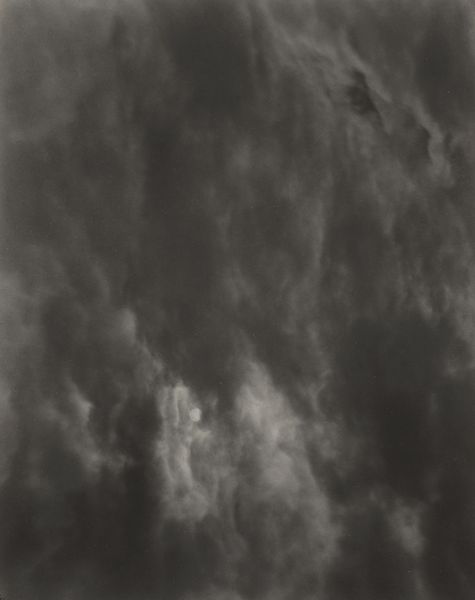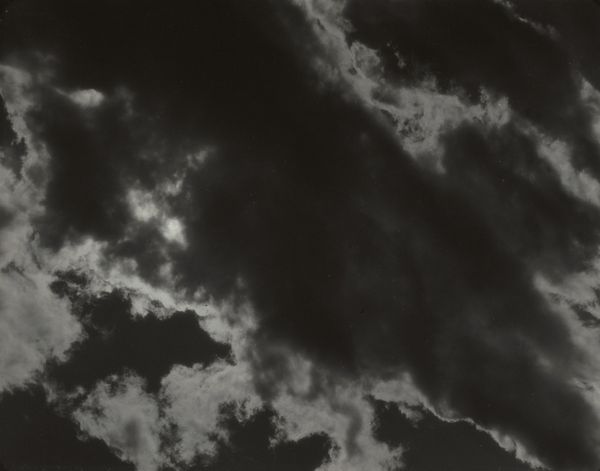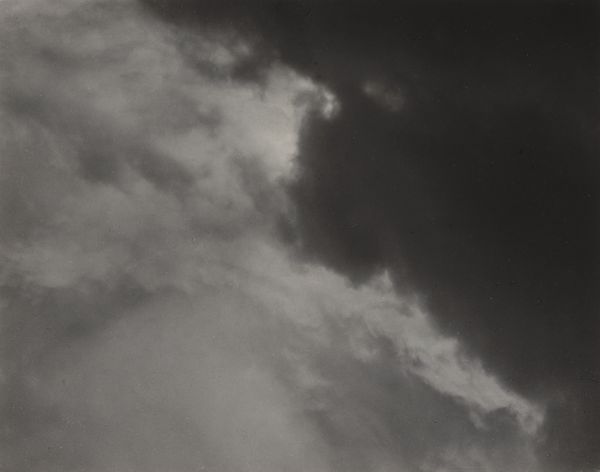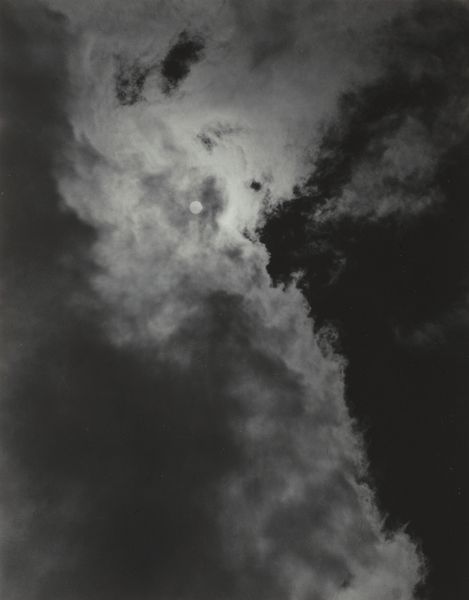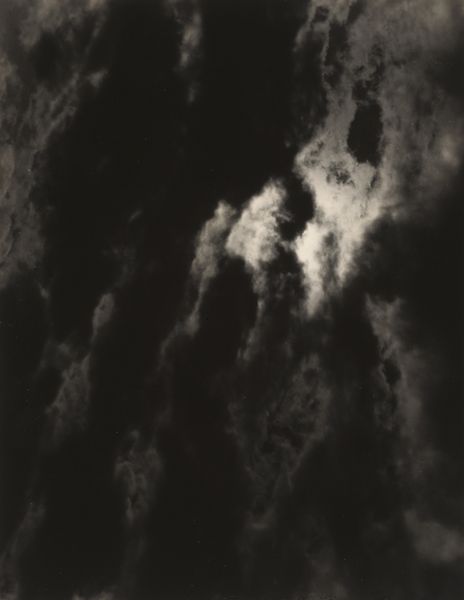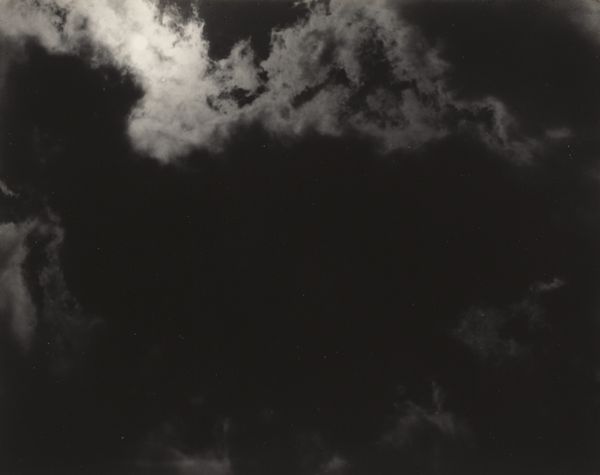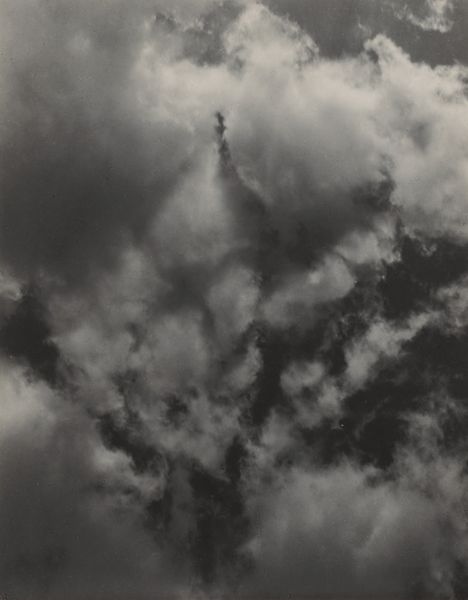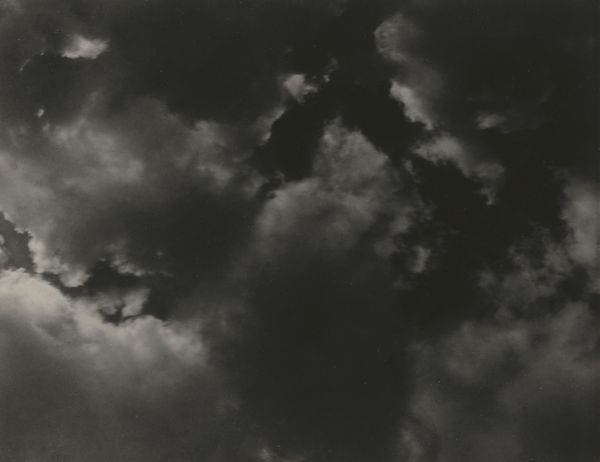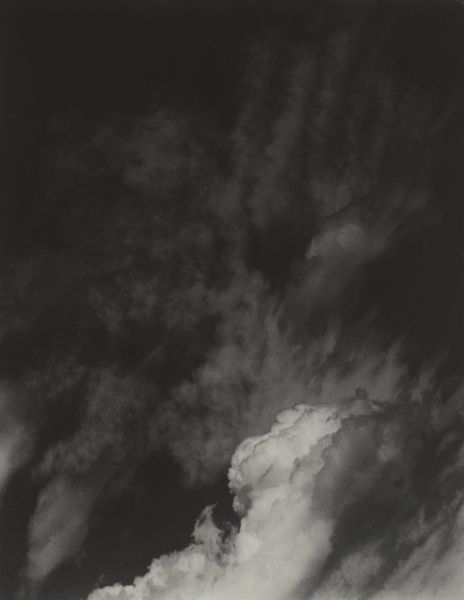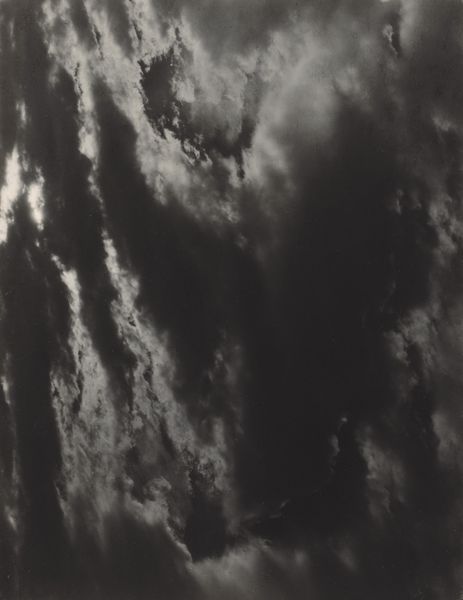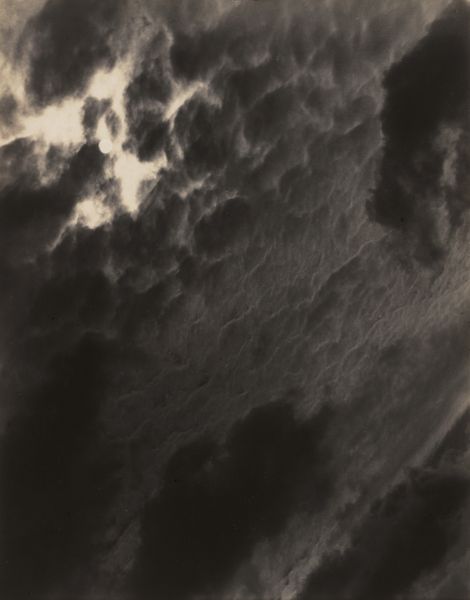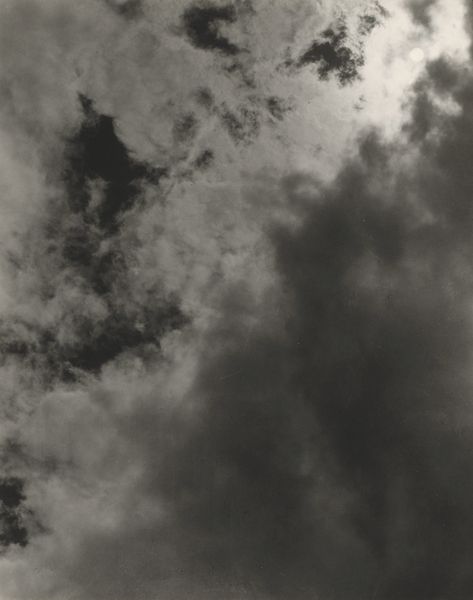
Dimensions: sheet (trimmed to image): 11.7 x 9.1 cm (4 5/8 x 3 9/16 in.) mount: 34.3 x 27.6 cm (13 1/2 x 10 7/8 in.)
Copyright: National Gallery of Art: CC0 1.0
Editor: Here we have Alfred Stieglitz's "Songs of the Sky D1," a gelatin-silver print from 1923. I'm struck by how abstract it feels, even though it's clearly rooted in the landscape. The heavy, dark clouds create such a somber, almost suffocating atmosphere. What's your take on it? Curator: Considering Stieglitz's broader project, it is easy to suggest the work, one of many from his "Songs of the Sky," series, aims to legitimize photography as high art, positioning it within a lineage of painting and drawing while emphasizing its unique capabilities. He often spoke of these cloud photographs as equivalent to musical compositions, seeking a universality of experience and emotion detached from specific places or political contexts. Editor: So, by depoliticizing the subject matter – clouds being, well, just clouds – he’s making a statement about photography’s potential for purely aesthetic expression? Almost an 'art for art's sake' kind of argument using a camera? Curator: Exactly! And it’s a carefully constructed argument. The series arose in the wake of World War I, amidst debates around the role of art in society. Stieglitz's decision to focus on clouds, these ephemeral and ever-changing subjects, represented an effort to move beyond the representational towards something more universal, something beyond the messy political realities of the time. Does this impulse resonate with other art movements around then? Editor: Definitely. It makes me think of the Abstract Expressionists later on, that pursuit of pure emotion and form, disengaged from explicit narratives. But isn’t there still a political dimension, even in its apparent neutrality? Choosing to ignore those realities is a political choice, too, right? Curator: An astute point! Indeed, the art world and museums were themselves shaping and sanitizing artwork's reception. Stieglitz knew that and probably didn’t want to fall into that scheme. Editor: I never considered photography in the 1920s as that enmeshed in political dialogues, but it is interesting to look through that perspective and compare these with Abstract Expressionism. Thanks! Curator: Likewise. Considering Stieglitz within a historical and political landscape adds fascinating layers.
Comments
No comments
Be the first to comment and join the conversation on the ultimate creative platform.
